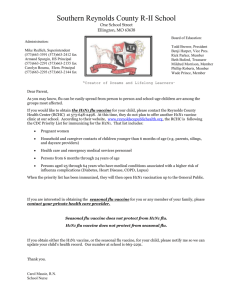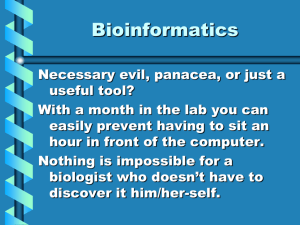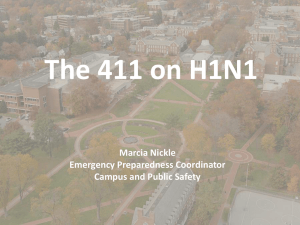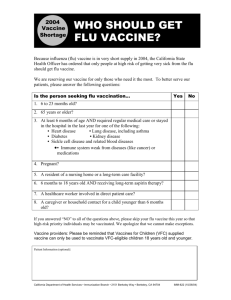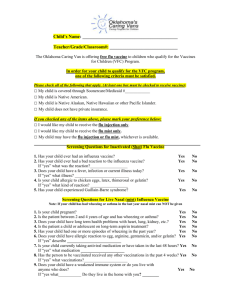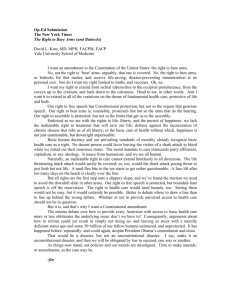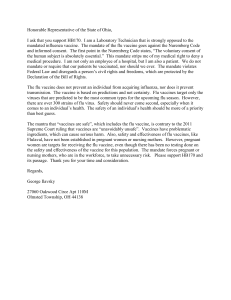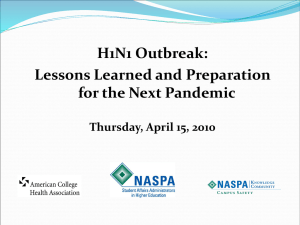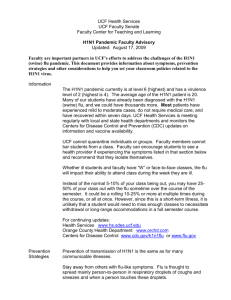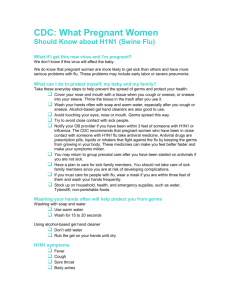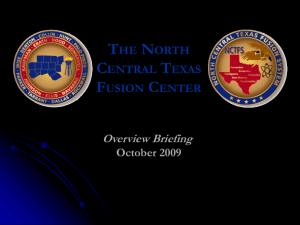2009-11-13 Shot Felt Round the Ward
advertisement
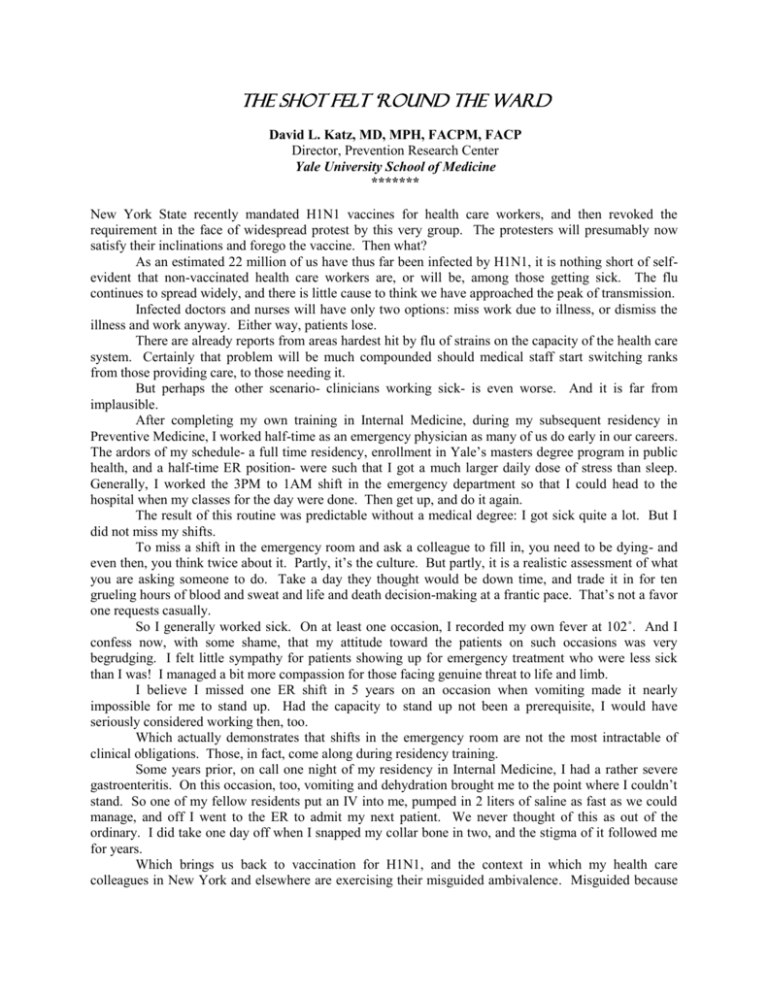
The Shot Felt ‘Round the Ward David L. Katz, MD, MPH, FACPM, FACP Director, Prevention Research Center Yale University School of Medicine ******* New York State recently mandated H1N1 vaccines for health care workers, and then revoked the requirement in the face of widespread protest by this very group. The protesters will presumably now satisfy their inclinations and forego the vaccine. Then what? As an estimated 22 million of us have thus far been infected by H1N1, it is nothing short of selfevident that non-vaccinated health care workers are, or will be, among those getting sick. The flu continues to spread widely, and there is little cause to think we have approached the peak of transmission. Infected doctors and nurses will have only two options: miss work due to illness, or dismiss the illness and work anyway. Either way, patients lose. There are already reports from areas hardest hit by flu of strains on the capacity of the health care system. Certainly that problem will be much compounded should medical staff start switching ranks from those providing care, to those needing it. But perhaps the other scenario- clinicians working sick- is even worse. And it is far from implausible. After completing my own training in Internal Medicine, during my subsequent residency in Preventive Medicine, I worked half-time as an emergency physician as many of us do early in our careers. The ardors of my schedule- a full time residency, enrollment in Yale’s masters degree program in public health, and a half-time ER position- were such that I got a much larger daily dose of stress than sleep. Generally, I worked the 3PM to 1AM shift in the emergency department so that I could head to the hospital when my classes for the day were done. Then get up, and do it again. The result of this routine was predictable without a medical degree: I got sick quite a lot. But I did not miss my shifts. To miss a shift in the emergency room and ask a colleague to fill in, you need to be dying- and even then, you think twice about it. Partly, it’s the culture. But partly, it is a realistic assessment of what you are asking someone to do. Take a day they thought would be down time, and trade it in for ten grueling hours of blood and sweat and life and death decision-making at a frantic pace. That’s not a favor one requests casually. So I generally worked sick. On at least one occasion, I recorded my own fever at 102˚. And I confess now, with some shame, that my attitude toward the patients on such occasions was very begrudging. I felt little sympathy for patients showing up for emergency treatment who were less sick than I was! I managed a bit more compassion for those facing genuine threat to life and limb. I believe I missed one ER shift in 5 years on an occasion when vomiting made it nearly impossible for me to stand up. Had the capacity to stand up not been a prerequisite, I would have seriously considered working then, too. Which actually demonstrates that shifts in the emergency room are not the most intractable of clinical obligations. Those, in fact, come along during residency training. Some years prior, on call one night of my residency in Internal Medicine, I had a rather severe gastroenteritis. On this occasion, too, vomiting and dehydration brought me to the point where I couldn’t stand. So one of my fellow residents put an IV into me, pumped in 2 liters of saline as fast as we could manage, and off I went to the ER to admit my next patient. We never thought of this as out of the ordinary. I did take one day off when I snapped my collar bone in two, and the stigma of it followed me for years. Which brings us back to vaccination for H1N1, and the context in which my health care colleagues in New York and elsewhere are exercising their misguided ambivalence. Misguided because while this flu has killed an estimated 4000, there is not a single documented serious adverse reaction to the vaccine. The virus, even though - thank goodness- generally mild, is the greater danger by orders of magnitude. And not merely misguided, but truly shameful. Our predecessors courageously confronted the great plagues of human history -cholera, smallpox - and placed themselves in certain danger to serve their patients. Some of us, it seems, prefer placing our patients in danger to serve ourselves. That the flu vaccine carries only theoretical and remote risk compounds the shame. The unimmunized among us will either dodge the bullet, miss work, or work sick. The latter two are more likely than the first, and will result either in reductions in much needed patient care, or the risk of transmission of H1N1 from provider to patient. Patients infected by doctors and nurses will be the collateral damage of flu vaccine reticence. Vaccines, after all, don’t just protect the people who get them. They also protect the people encountered by the people who get them. You can’t catch the flu from someone who can’t get it to give you. The vaccine received or declined by a doctor or nurse will thus be a shot felt ‘round the ward. And therefore a moral obligation, mandated or otherwise. -fin Dr. David L. Katz, a Preventive Medicine specialist, is the Director of Yale University’s Prevention Research Center, and Associate Professor, adjunct, in Public Health Practice, at the Yale University School of Public Health. He sees patients weekly at the Integrative Medicine Center at Griffin Hospital in Derby, CT, a facility which he founded and directs. He has received the H1N1 vaccine. *********************************** David L. Katz, MD, MPH, FACPM, FACP Director, Prevention Research Center Griffin Hospital, 2nd Floor 130 Division Street Derby CT 06418 Home: 203 - 288-2228 Work: 203 - 732-7194 Mobile: 203-671-6863 Fax: 203 - 732-1264 E-mail: david.katz@Yale.edu Website: www.davidkatzmd.com Administrative assistant: Helen Day Helen.Day@yalegriffinprc.org ************************************
